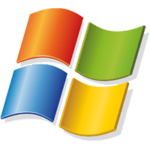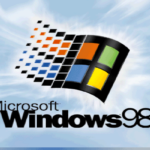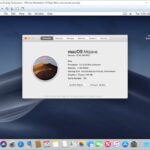By default, Windows 11 displays a few app and system icons in the bottom-left corner (known as the system tray). However, not all icons are visible, as hidden program icons have suddenly appeared in the taskbar corner overflow region. When you press the up arrow in that region, it becomes visible.

Although hiding icons results in a clutter-free taskbar, you may want to expose all icons in the taskbar corner overflow. If this is the case, you’ll need to modify your settings. Follow these methods to display all taskbar corner overflow icons in Windows 11.
Recommended Post:- Fixed: 0xc00007b Error on Windows 10 & Main Causes
How to Turn Windows 11 Hidden Icon Menu On or Off
In the following section of the article, we will discuss how you can turn Windows 11 Hidden Icon On or Off in your system. Let us begin
Solution 1: Turn it In or Off from Windows 11
When many programmes and system processes are operating in the background on Windows 11, they are hidden. However, the hidden app icons can be found and accessed by clicking the Up arrow (System Tray menu) at the right end of the taskbar.
Windows 11’s September update (22H2) introduces a new option to the Taskbar settings page that removes the system tray menu (arrow-up symbol) from the taskbar notification area. Here’s how to hide the system tray menu from the taskbar in Windows 11:

- Step 1: To access Windows Settings, click the Start button and then pick ‘Settings’ from the menu. Alternatively, press Win+I.
- Step 2: In the Settings menu, pick ‘Personalization’ from the list on the right, and then ‘Taskbar’ from the list on the left.
- Step 3: You can also right-click an empty region of the taskbar and choose ‘Taskbar settings’ from the menu.
- Step 4: Next, go down the Taskbar settings menu and select the ‘Other system tray icons’ menu to reveal system tray icon alternatives.
- Step 5: To remove the System Test menu from the taskbar, toggle the ‘Off’ switch next to the ‘Hidden icon menu’ option.
The system tray overflow menu will be removed from the taskbar corner instantly. This will also remove all of the hidden app icons from the System tray. - Step 6: To display the system tray overflow menu on the taskbar, toggle the ‘Hidden icon menu’ option to the ‘On’ position.
Solution 2: Display the System Tray or App Icons without the System Tray Menu
However, some icons, such as ‘Safe Eject Media,’ ‘OneDrive status indicator,’ ‘Windows Security,’ and so on, must always be present in the taskbar notification area. Furthermore, you cannot close certain applications, such as OneDrive, if they do not appear in the taskbar’s right-end corner.

You may still conceal the System tray menu (Hidden icon menu) with all of the extraneous icons, leaving only the one you need in the taskbar corner. This is how you do it:
- Step 1: Right-click any empty spot on the taskbar and choose ‘Taskbar settings’.
- Step 2: On the Taskbar settings page, click the ‘Other system tray icons’ tile to view other possibilities.
- Step 3: To conceal the system tray menu from the taskbar, deactivate the ‘Hidden icon menu’ option.
- Step 4: Toggle the slider next to any apps or system icons that you wish to appear in the taskbar area.

The icons you enable will now appear in the taskbar notification area, while those you disable will remain in the hidden system tray overflow menu.
Solution 3: Use Drag and Drop to Display System Tray Icons
Another approach for displaying icons in the taskbar area is to use drag and drop. The icons you want to see in the taskbar corner can be dragged from the overflow menu.
- Step 1: Click the up Up arrow button to reveal the overflow menu’s hidden icons. Then, click and hold the app icon you wish to see on the taskbar, and then move it over the Up arrow button.
- Step 2: Using the drag-and-drop approach, you can easily relocate the icons from the overflow menu to the taskbar notification area.
Solution 4: Make use of the Registry Editor.
- Step 1: Press Windows+ R to launch the Run dialogue box.
- Step 2: To open Registry Editor, type Regedit and click Enter.
- Step 3: First, we must prepare a backup. To do so, go to File and select Export. Now, save the reg file to a convenient location.
- Step 4: To open Registry Editor, type Regedit and click Enter.
- Step 6: Note this path:
- Computer\HKEY_CURRENT_USER\Software\Microsoft\Windows\CurrentVersion\Policies\Explorer
- Step 7: Right-click on the right pane, choose New and then choose DWORD. Change the name to NoTrayItemsDisplay.
- Step 8: Double-click the DWORD and set its Value data to 1.
- Step 9: To activate it, set the Value data of the DWORD to 0.
- Step 9: Reboot your computer to allow the modifications to take effect.
Solution 5: Make use of the Control Panel

- Step 1: Open the Run terminal by pressing Windows+ R.
- Step 2: Enter the following command into the empty field after copying and pasting it:
- explorer shell:::{05d7b0f4-2121-4eff-bf6b-ed3f69b894d9}
- Step 3: On the next window, uncheck the Always show all icons and notifications on the Taskbar checkbox and click OK.

Conclusion
The system tray overflow menu in the Taskbar can now be hidden in Windows 11 22H2. Microsoft has been making preview editions of the next major refresh of Windows 11 (version 22H2) available, and while the firm emphasizes most of the new features, previews may also include some secret experimental features. And, we hope you found this article informative. Stay connected with us for such amazing fixes and solutions.







